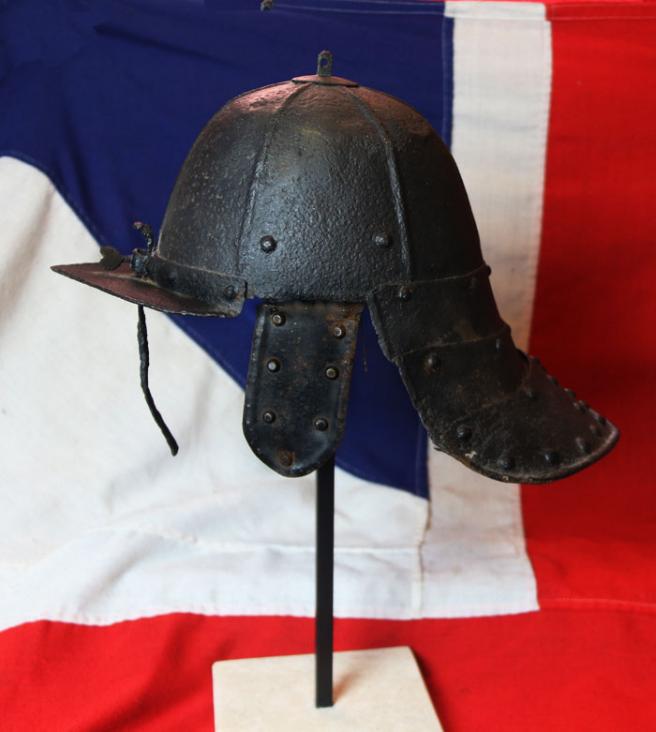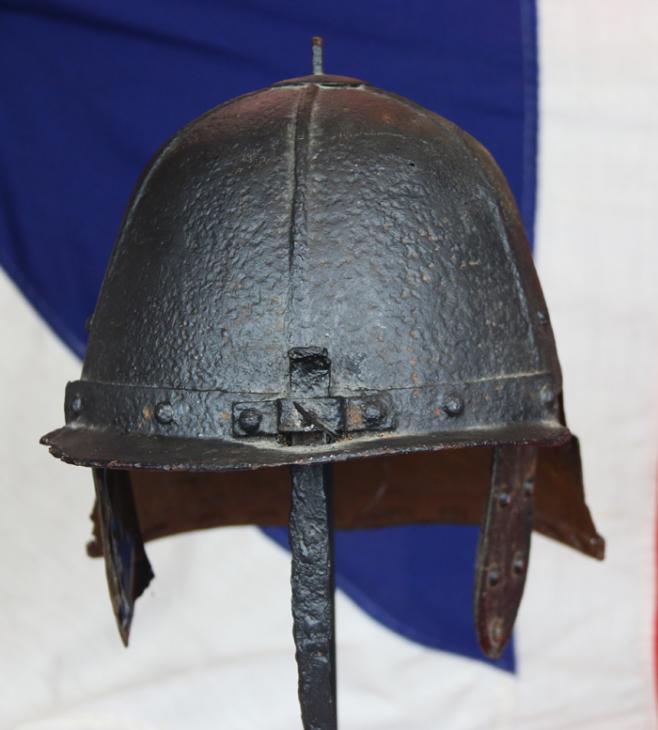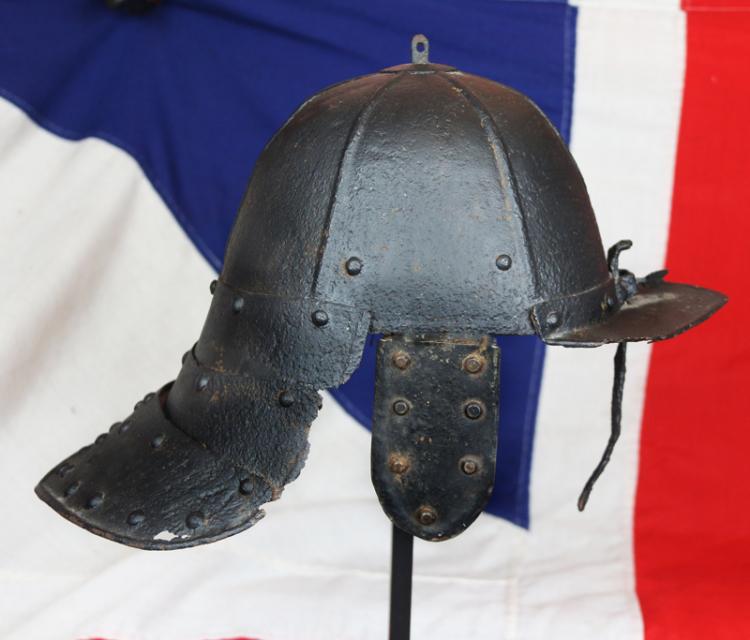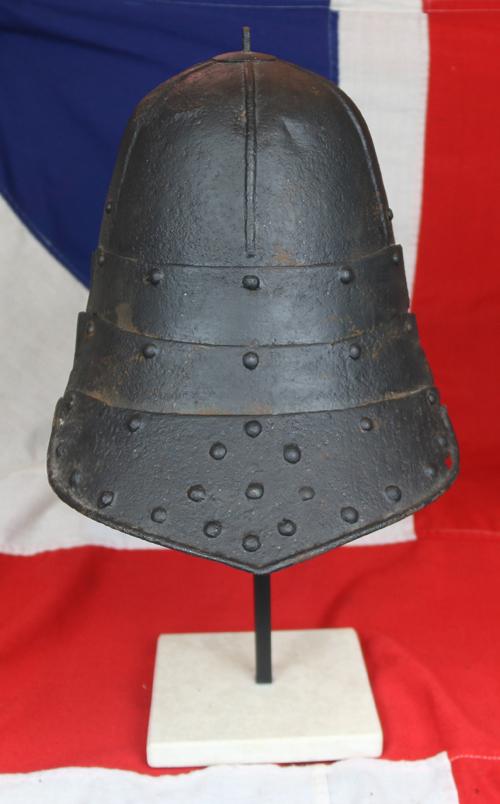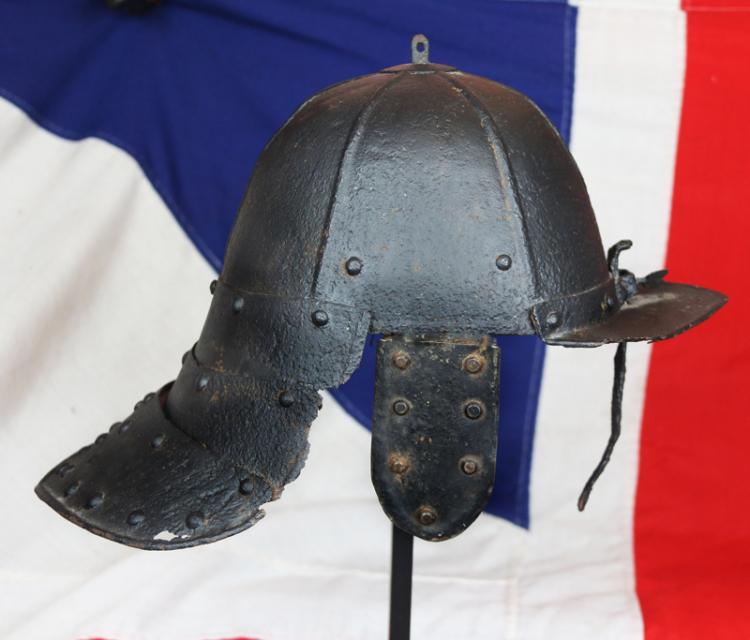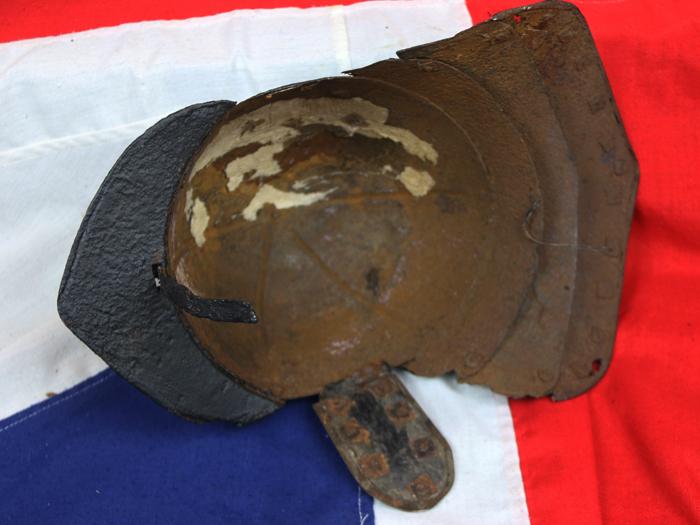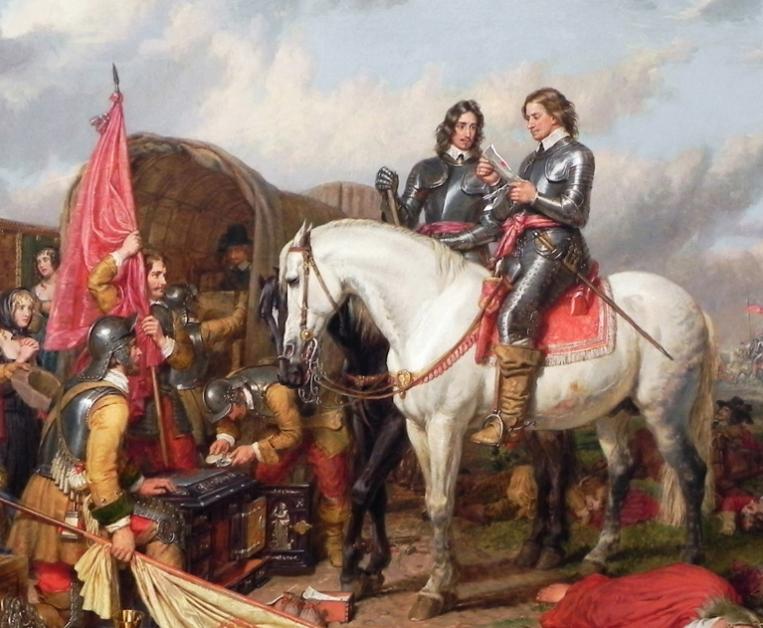Original English Civil War Period, So called, ‘Lobster Pot’ Helmet For Cavalry
A good English Civil War period helmet, circa 1640, with traditional, articulated lobster-tail pattern lames [neck defences] made in several parts and riveted, hence its nickname ‘the lobster pot’. Extended peak, six ribs skull, with traditional top skull mounted ring. Twin ear flaps, one with leather hinging intact. This super original, English Civil War helmet could be a fabulous companion, to our equally fabulous original English Civil War cavalry breast & back plate cuirass, that actually came from the world renowned Warwick Castle Armoury [sold separately]. Although traditionally associated with the Cromwellian roundheads they were, in reality, worn by both sides. Nicely made example, in overall russetted condition, with surface blacking and small areas metal holing and edge damage by one side of two lames. The New Model Army of England was formed in 1645 by the Parliamentarians in the English Civil War, and was disbanded in 1660 after the Restoration. It differed from other armies in the series of civil wars referred to as the Wars of the Three Kingdoms in that it was intended as an army liable for service anywhere in the country (including in Scotland and Ireland), rather than being tied to a single area or garrison. Its soldiers became full-time professionals, rather than part-time militia. To establish a professional officer corps, the army's leaders were prohibited from having seats in either the House of Lords or House of Commons. This was to encourage their separation from the political or religious factions among the Parliamentarians.
The New Model Army was raised partly from among veteran soldiers who already had deeply held Puritan religious convictions, and partly from conscripts who brought with them many commonly held beliefs about religion or society. Many of its common soldiers therefore held Dissenting or radical views unique among English armies. Although the Army's senior officers did not share many of their soldiers' political opinions, their independence from Parliament led to the Army's willingness to contribute to the overthrow of both the Crown and Parliament's authority, and to establish a short-lived Commonwealth, which included a period of direct military rule. Ultimately, the Army's Generals (particularly Oliver Cromwell) could rely both on the Army's internal discipline and its religious zeal and innate support for the "Good Old Cause" to maintain an essentially dictatorial rule. The New Model Army's elite troops were its Regiments of Horse. They were armed and equipped in the style known at the time as harquebusiers, rather than as heavily armoured cuirassiers. They wore a back-and-front breastplate over a buff leather coat, which itself gave some protection against sword cuts, and normally a "lobster-tailed pot" helmet and a bridle gauntlet on the left hand. The sleeves of the buff coats were often decorated with strips of braid, which may have been arranged in a regimental pattern. Leather "bucket-topped" riding boots gave some protection to the legs.
Regiments were organised into six troops, of one hundred troopers plus officers, non-commissioned officers and specialists (drummers, farriers etc.). Each troop had its own standard, 2 feet (61 cm) square. On the battlefield, a regiment was normally formed as two "divisions" of three troops, one commanded by the regiment's Colonel (or the Major, if the Colonel was not present), the other by the Lieutenant Colonel.
Their discipline was markedly superior to that of their Royalist counterparts. Cromwell specifically forbade his men to gallop after a fleeing enemy, but demanded they hold the battlefield. This meant that the New Model cavalry could charge, break an enemy force, regroup and charge again at another objective. On the other hand, when required to pursue, they did so relentlessly, not breaking ranks to loot abandoned enemy baggage as Royalist horse often did. The iron ear flaps are almost certainly old replacements, one loose and separate. Shown on a display stand [not included]
Code: 23555
2450.00 GBP

